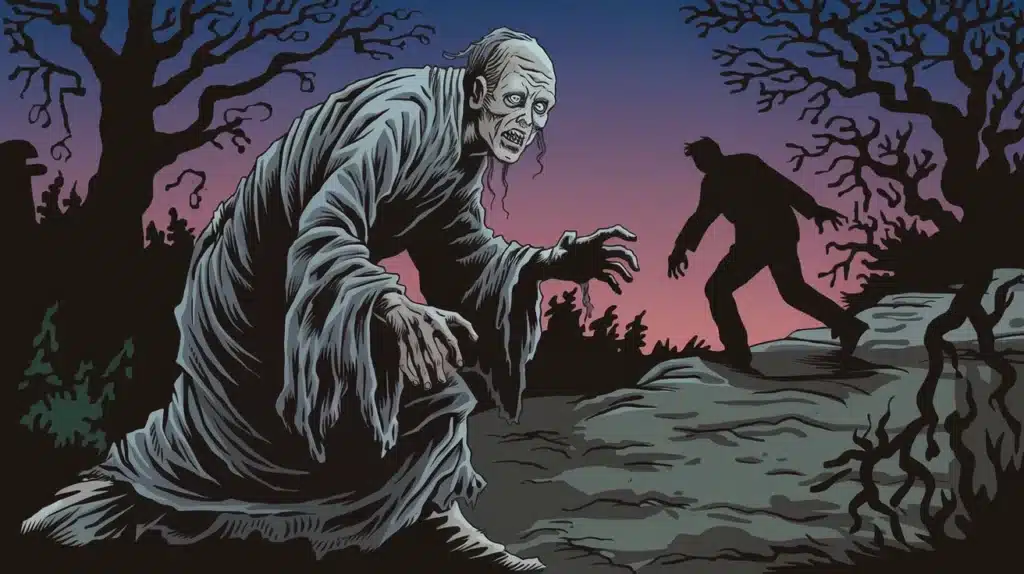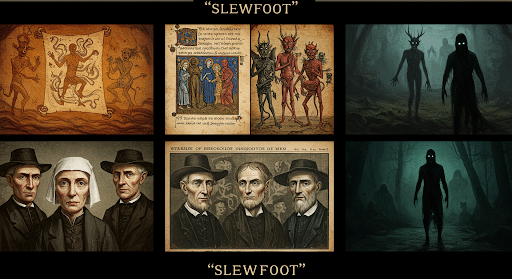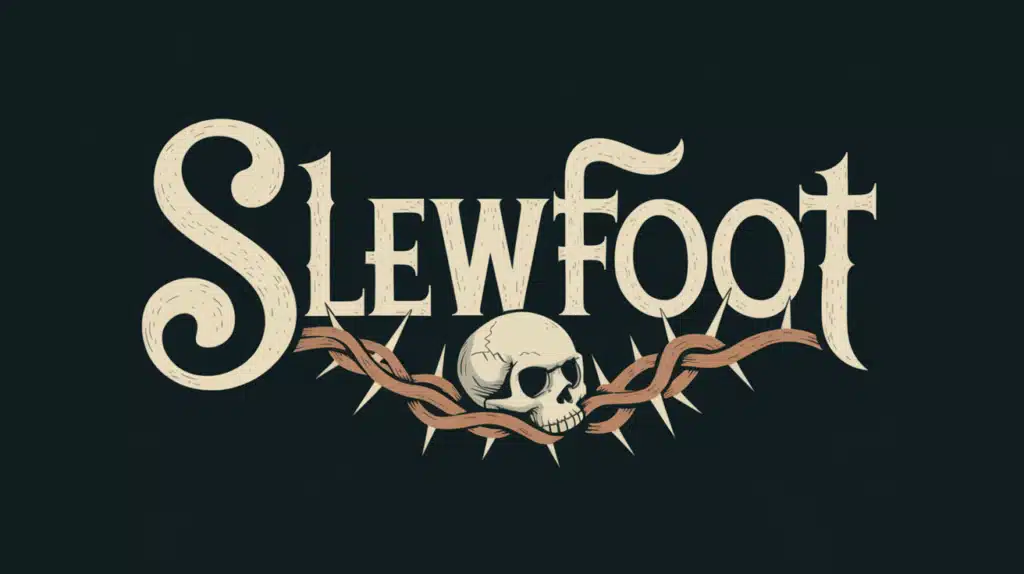Have you heard “slewfoot” whispered in old tales? Most of us scratch our heads when this odd word pops up in folk songs or grandma’s warnings. It’s frustrating to miss cultural references that everyone else seems to get.
The slewfoot meaning isn’t just about funny walking. This curious term has traveled through centuries, picking up meanings about lies, trickery, and moral failure along the way.
It started as a simple description of crooked feet but grew into something much more significant in our stories and beliefs.
I’m going to show you how this strange word connects to both everyday language and deep cultural ideas. And trust me, once you know its story, you’ll spot it hiding in plain sight all around you.
Origins of the “Slewfoot” Term in Historical Texts

The term “Slewfoot“ walks the path of antiquity, whispered in the halls of both folklore and warning. Though not inscribed upon the sacred scrolls, its meaning bears the mark of deception and ill intent.
In days of old, “slew“ meant to turn aside, to twist from the righteous way. “Foot“ speaks of one’s walk, the path a man treads in this world.
Joined together, it describes one who moves in falsehood—one whose steps are set upon the snare of mischief.
Some trace it to the realm of sport, where an unjust hand sweeps the legs from beneath another.
Others know it as a name whispered of the adversary, the great deceiver, who leads astray with subtlety and guile. Thus, the term endures—a warning to the wise that they may not stumble.
Symbolic Slewfoot Meaning You Should Know About

In many cultures, the slew foot goes beyond physical walking to stand for moral crookedness and deception. The image of twisted feet creates a perfect symbol for someone who doesn’t walk a straight, honest path in life.
This symbolic meaning has stuck around for centuries because it connects something we can see (odd walking) with something we can’t (dishonesty and bad intentions).
-
A Sign of Deception—The term “Slewfoot” embodies trickery, describing someone who causes others to stumble, whether in spirit or in action.
-
The Twisting of Truth – Just as the serpent beguiled Eve in the garden, so does Slewfoot represent those who turn truth into falsehood, leading the unwary astray.
-
A Crooked Path – The name itself suggests a way that is not straight, an unsteady walk, warning against those who scheme in secret.
-
A Betrayer in Battle – It symbolizes an adversary who does not strike in fairness but rather undermines with deceit, taking down others through treachery.
-
A Call to Vigilance – The wise must stand firm, for those who walk uprightly shall not be shaken, but the crooked shall fall into their snare.
Linguistic Evolution of Slewfoot Throughout History

The term “slew foot” began simply as a description of a physical walking pattern with feet turned outward. Over time, it took on moral and spiritual meanings as communities linked physical traits with character flaws.
By the 19th century, the word had fully shifted from just describing feet to becoming shorthand for dishonesty and moral failure in stories, songs, and everyday speech
1. Old English and Linguistic Roots
The term “Slewfoot” originates in Old English and Middle English dialects. ” Slew” derives from words meaning to twist, turn, or swerve, while “foot” symbolizes one’s movement or path.
Together, these words formed an expression that suggested unsteady footing, deceptive movement, or a stumble caused by trickery.
2. Folklore and Early Symbolism
In early folklore, “Slewfoot” was often associated with a shadowy trickster or malevolent force that caused people to fall—both physically and spiritually.
This association positioned the term as a warning against deception and unseen dangers, especially in rural storytelling and cautionary tales.
Some linked it to spirits, demons, or unseen forces that sought to lead the righteous astray.
3. Adoption in Sports Terminology
By the late 19th and early 20th centuries, the term took on a new meaning in sports, particularly in hockey and football.
A “Slewfoot” became a recognized foul, describing an illegal move where a player sweeps or kicks the legs out from under an opponent, causing them to fall backward.
This usage solidified the idea of the term representing underhanded tactics, unfair play, and deceitful action.
4. Religious and Spiritual Connotations
In some religious circles, “Slewfoot” was adopted as a colloquial name for the devil, emphasizing his role as the deceiver who seeks to cause the faithful to stumble.
This usage appears in Christian sermons, hymns, and cautionary teachings, reinforcing its connection to temptation, trickery, and the need for vigilance against spiritual downfall.
5. Regional and Cultural Variation
The term persisted in regional dialects and cultural expressions, particularly in Southern American folklore and Christian revivalist movements, where preachers warned of “Slewfoot’s tricks” to deceive the righteous.
Similar concepts appear in African American spirituals, Appalachian folklore, and even some Native American cautionary tales about tricksters and deceivers.
6. Modern Usage and Decline
The use of “Slewfoot” in contemporary language has diminished, though it remains a recognizable term in sports, historical texts, and specific religious communities.
While it no longer holds widespread mainstream use, its core meaning—a deceptive force that causes others to fall unfairly—remains intact.
Whether in folklore, faith, or competition, “Slewfoot” endures as a symbol of treachery, the crooked path, and the unseen snare set before the unsuspecting.
Cultural Evolution of Demonic Imagery

Demons have evolved from ancient spirits of chaos to modern horror figures, with their depiction changing across cultures and eras.
In Mesopotamian and Egyptian mythology, demons were often linked to disease and disaster, feared but sometimes invoked for protection.
Early Jewish and Christian traditions portrayed them as fallen beings who opposed divine order, spreading lies and tempting souls.
During the Middle Ages, demons took on grotesque, horned forms, blending pagan deities with Christian fears.
The Renaissance reimagined them as tragic rebels or symbols of forbidden knowledge, as seen in Paradise Lost.
By the 20th century, demons dominated horror films, embodying possession and fear.
Today, they appear in video games, literature, and psychology, continuing to symbolize temptation, power, and the eternal struggle between good and evil.
Slewfoot Meaning in Christian Folk Tradition

In Christian folklore, especially within Appalachian and Southern traditions, “Slewfoot” became a colloquial nickname for the devil, often used in place of the word “devil” itself.
This term is associated with imagery of Satan, featuring cloven hooves, which creates a distinctive walking style that appears to “stumble” or trip others.
Here’s how the term has been used in folk stories, hymns, and preaching:
-
A Folk Name for the Devil: Used to refer to Satan, symbolizing his deceptive and tempting nature.
-
Symbol of Trickery: Depicts the devil as a sly figure who leads believers astray subtly.
-
Common in Revival Preaching: Frequently used in 19th and 20th-century evangelical sermons.
-
Referenced in Songs: Found in gospel songs as an enemy to resist.
-
Tied to Folklore: Widespread in rural stories warning of moral dangers.
-
Decline in Usage: Once common, the term has faded in modern religious contexts.
Though it’s less common today, “Slewfoot” remains a vivid part of religious and cultural history.
The Bottom Line
The path through slewfoot meaning reveals more than an odd word—it uncovers a profound metaphor woven through history.
This term captures the subtle ways we wander from the truth, leaving distinctive tracks that mark our moral choices.
From ancient texts to backwoods sermons, Slewfoot has served as a tangible reminder that deception and moral failure begin with small deviations.
Yet understanding this symbolism offers us something valuable: the awareness to recognize when we’re straying. Remember, the crooked path may seem easier at first, but it never leads to where you truly want to go.


















